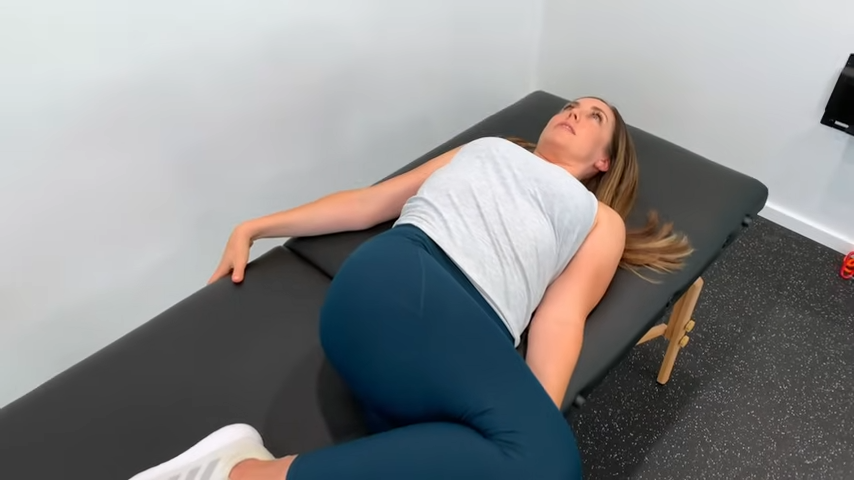Lower back pain is a common issue that can significantly impact daily life, especially for active women who are frequently on the move. The demands of exercise routines, sports, and other physical activities can strain the lower back, leading to discomfort and potential injury. Addressing this pain effectively requires a multifaceted approach that includes both preventative exercises and appropriate treatments. Understanding how to manage and prevent lower back pain is essential for maintaining an active and healthy lifestyle.
Effective management of lower back pain involves integrating specific exercises designed to strengthen and stabilize the lower back and core muscles. These exercises help in reducing pain, improving flexibility, and preventing future injuries. Additionally, various treatments such as physical therapy, chiropractic care, and proper ergonomics can provide relief and support. Implementing a balanced approach that combines both exercise and treatment is crucial for long-term relief and recovery.
Active women must be proactive in managing lower back pain to avoid disruptions in their fitness routines and daily activities. By focusing on targeted exercises and seeking professional treatment when necessary, they can mitigate the effects of lower back pain and enhance overall physical well-being. Adopting these strategies not only helps in alleviating pain but also contributes to a more active, comfortable, and fulfilling lifestyle.
Managing lower back pain effectively involves understanding and implementing targeted strategies. Below are key approaches to help alleviate and prevent lower back pain.
Preventative Exercises for Lower Back Pain
Regular exercise is crucial in preventing and managing lower back pain. Exercises that strengthen the core, such as planks and bridges, help support the lower back and reduce strain. Stretching exercises, like hamstring stretches and lower back stretches, enhance flexibility and alleviate tension. Incorporating these exercises into your routine can help maintain a healthy back and prevent pain associated with physical activity.
Understanding the importance of exercise in managing lower back pain involves exploring specific types of exercises and their benefits. The following subheadings provide insight into various exercises, their benefits, and how to effectively incorporate them into your routine.
- What Are Effective Core-Strengthening Exercises for Lower Back Pain?
Core-strengthening exercises like planks and bridges are highly effective in managing lower back pain. These exercises focus on building the abdominal and lower back muscles, which support the spine and reduce strain. Performing these exercises regularly can strengthen your core and help maintain a healthy back.
- Where Should You Perform Stretching Exercises to Relieve Back Tension?
Stretching exercises such as hamstring stretches and lower back stretches should be performed in a comfortable and open space where you can move freely. Doing these stretches on a mat or soft surface helps alleviate tension and improves flexibility, which can contribute to reduced lower back pain and overall spinal health.
- How Often Should You Incorporate These Exercises Into Your Routine?
To effectively manage and prevent lower back pain, incorporating core-strengthening and stretching exercises into your routine three to four times a week is recommended. Consistency is key, as regular practice helps maintain flexibility, strengthen the muscles supporting the lower back, and prevent discomfort associated with physical activity.
4o mini
Effective Treatments for Lower Back Pain
For those already experiencing lower back pain, various treatments can offer relief. Physical therapy focuses on exercises to improve strength and flexibility, while chiropractic care can address misalignments contributing to pain. Additionally, using proper ergonomics and supportive equipment, such as lumbar supports, can prevent further discomfort. Seeking professional advice and utilizing these treatments can help manage and reduce lower back pain effectively.
Exploring treatments for lower back pain involves understanding why they are effective, their benefits, and how they address specific issues. The following subheadings provide insights into various treatments and their advantages for managing back pain.
- Why Physical Therapy is Effective for Lower Back Pain
Physical therapy offers targeted exercises that enhance strength and flexibility, crucial for managing lower back pain. By focusing on specific muscle groups and improving movement patterns, physical therapy can alleviate discomfort, promote healing, and reduce the risk of future injuries. This approach addresses the root causes of pain and aids in recovery.
- What Are the Benefits of Chiropractic Care for Back Pain
Chiropractic care can effectively address misalignments in the spine that contribute to lower back pain. By realigning the vertebrae, chiropractors can relieve pressure on nerves and improve spinal function. This treatment not only helps reduce pain but also enhances overall spinal health and mobility, contributing to long-term relief.
- How Ergonomics and Supportive Equipment Can Prevent Discomfort
Using proper ergonomics and supportive equipment, like lumbar supports, helps maintain correct posture and reduces strain on the lower back. Proper chair height, desk setup, and support cushions can prevent further discomfort and support spinal alignment. Integrating these measures into daily routines can effectively manage and prevent lower back pain.
Conclusion: Effective Strategies for Managing Lower Back Pain
Lower back pain is a prevalent concern that can disrupt daily activities, particularly for active women engaged in regular physical exertion. A comprehensive approach to managing this issue includes preventive measures such as strengthening core exercises and stretching, along with targeted treatments like physical therapy and chiropractic care. By combining these strategies with proper ergonomics and supportive equipment, individuals can significantly reduce discomfort and enhance their overall quality of life. Proactively addressing lower back pain not only alleviates current issues but also helps prevent future complications, supporting an active and healthy lifestyle.








